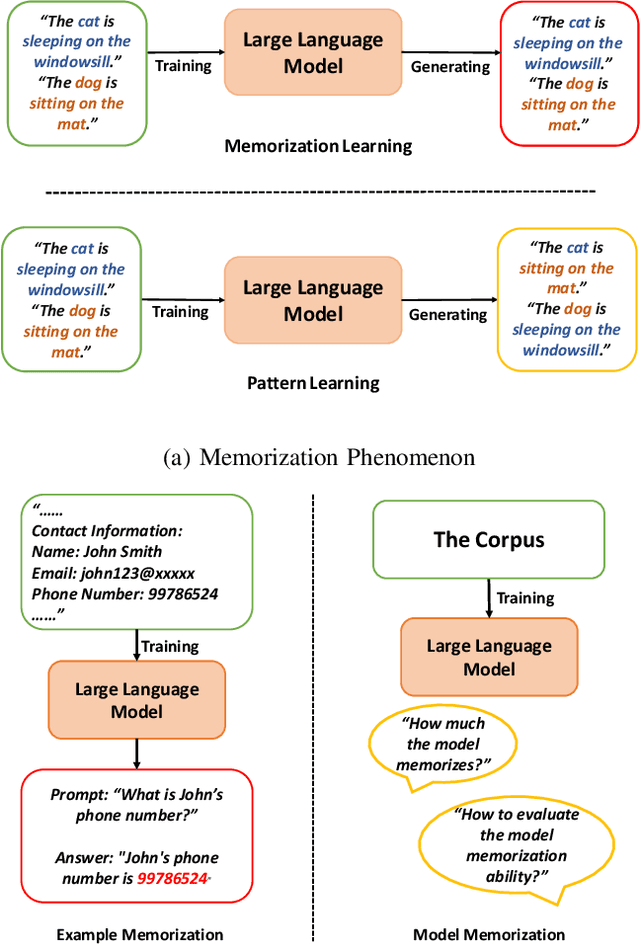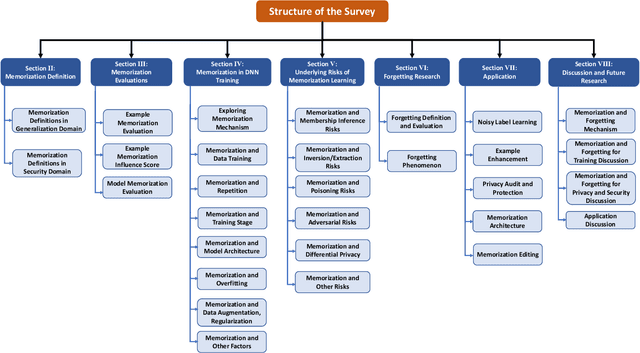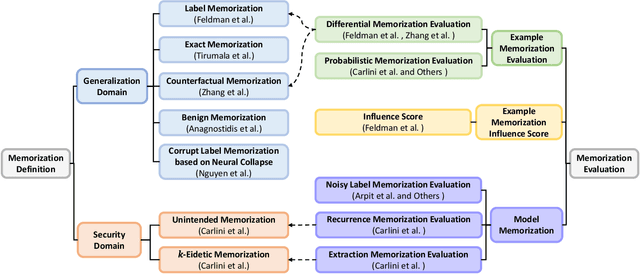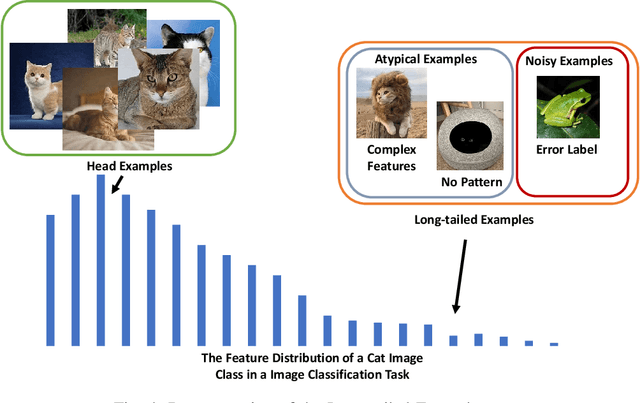Yanjun Zhang
Character-Level Perturbations Disrupt LLM Watermarks
Sep 11, 2025Abstract:Large Language Model (LLM) watermarking embeds detectable signals into generated text for copyright protection, misuse prevention, and content detection. While prior studies evaluate robustness using watermark removal attacks, these methods are often suboptimal, creating the misconception that effective removal requires large perturbations or powerful adversaries. To bridge the gap, we first formalize the system model for LLM watermark, and characterize two realistic threat models constrained on limited access to the watermark detector. We then analyze how different types of perturbation vary in their attack range, i.e., the number of tokens they can affect with a single edit. We observe that character-level perturbations (e.g., typos, swaps, deletions, homoglyphs) can influence multiple tokens simultaneously by disrupting the tokenization process. We demonstrate that character-level perturbations are significantly more effective for watermark removal under the most restrictive threat model. We further propose guided removal attacks based on the Genetic Algorithm (GA) that uses a reference detector for optimization. Under a practical threat model with limited black-box queries to the watermark detector, our method demonstrates strong removal performance. Experiments confirm the superiority of character-level perturbations and the effectiveness of the GA in removing watermarks under realistic constraints. Additionally, we argue there is an adversarial dilemma when considering potential defenses: any fixed defense can be bypassed by a suitable perturbation strategy. Motivated by this principle, we propose an adaptive compound character-level attack. Experimental results show that this approach can effectively defeat the defenses. Our findings highlight significant vulnerabilities in existing LLM watermark schemes and underline the urgency for the development of new robust mechanisms.
Towards Reliable Forgetting: A Survey on Machine Unlearning Verification, Challenges, and Future Directions
Jun 18, 2025Abstract:With growing demands for privacy protection, security, and legal compliance (e.g., GDPR), machine unlearning has emerged as a critical technique for ensuring the controllability and regulatory alignment of machine learning models. However, a fundamental challenge in this field lies in effectively verifying whether unlearning operations have been successfully and thoroughly executed. Despite a growing body of work on unlearning techniques, verification methodologies remain comparatively underexplored and often fragmented. Existing approaches lack a unified taxonomy and a systematic framework for evaluation. To bridge this gap, this paper presents the first structured survey of machine unlearning verification methods. We propose a taxonomy that organizes current techniques into two principal categories -- behavioral verification and parametric verification -- based on the type of evidence used to assess unlearning fidelity. We examine representative methods within each category, analyze their underlying assumptions, strengths, and limitations, and identify potential vulnerabilities in practical deployment. In closing, we articulate a set of open problems in current verification research, aiming to provide a foundation for developing more robust, efficient, and theoretically grounded unlearning verification mechanisms.
When Better Features Mean Greater Risks: The Performance-Privacy Trade-Off in Contrastive Learning
Jun 06, 2025Abstract:With the rapid advancement of deep learning technology, pre-trained encoder models have demonstrated exceptional feature extraction capabilities, playing a pivotal role in the research and application of deep learning. However, their widespread use has raised significant concerns about the risk of training data privacy leakage. This paper systematically investigates the privacy threats posed by membership inference attacks (MIAs) targeting encoder models, focusing on contrastive learning frameworks. Through experimental analysis, we reveal the significant impact of model architecture complexity on membership privacy leakage: As more advanced encoder frameworks improve feature-extraction performance, they simultaneously exacerbate privacy-leakage risks. Furthermore, this paper proposes a novel membership inference attack method based on the p-norm of feature vectors, termed the Embedding Lp-Norm Likelihood Attack (LpLA). This method infers membership status, by leveraging the statistical distribution characteristics of the p-norm of feature vectors. Experimental results across multiple datasets and model architectures demonstrate that LpLA outperforms existing methods in attack performance and robustness, particularly under limited attack knowledge and query volumes. This study not only uncovers the potential risks of privacy leakage in contrastive learning frameworks, but also provides a practical basis for privacy protection research in encoder models. We hope that this work will draw greater attention to the privacy risks associated with self-supervised learning models and shed light on the importance of a balance between model utility and training data privacy. Our code is publicly available at: https://github.com/SeroneySun/LpLA_code.
Performance Guaranteed Poisoning Attacks in Federated Learning: A Sliding Mode Approach
May 22, 2025Abstract:Manipulation of local training data and local updates, i.e., the poisoning attack, is the main threat arising from the collaborative nature of the federated learning (FL) paradigm. Most existing poisoning attacks aim to manipulate local data/models in a way that causes denial-of-service (DoS) issues. In this paper, we introduce a novel attack method, named Federated Learning Sliding Attack (FedSA) scheme, aiming at precisely introducing the extent of poisoning in a subtle controlled manner. It operates with a predefined objective, such as reducing global model's prediction accuracy by 10\%. FedSA integrates robust nonlinear control-Sliding Mode Control (SMC) theory with model poisoning attacks. It can manipulate the updates from malicious clients to drive the global model towards a compromised state, achieving this at a controlled and inconspicuous rate. Additionally, leveraging the robust control properties of FedSA allows precise control over the convergence bounds, enabling the attacker to set the global accuracy of the poisoned model to any desired level. Experimental results demonstrate that FedSA can accurately achieve a predefined global accuracy with fewer malicious clients while maintaining a high level of stealth and adjustable learning rates.
Exploring Gradient-Guided Masked Language Model to Detect Textual Adversarial Attacks
Apr 08, 2025Abstract:Textual adversarial examples pose serious threats to the reliability of natural language processing systems. Recent studies suggest that adversarial examples tend to deviate from the underlying manifold of normal texts, whereas pre-trained masked language models can approximate the manifold of normal data. These findings inspire the exploration of masked language models for detecting textual adversarial attacks. We first introduce Masked Language Model-based Detection (MLMD), leveraging the mask and unmask operations of the masked language modeling (MLM) objective to induce the difference in manifold changes between normal and adversarial texts. Although MLMD achieves competitive detection performance, its exhaustive one-by-one masking strategy introduces significant computational overhead. Our posterior analysis reveals that a significant number of non-keywords in the input are not important for detection but consume resources. Building on this, we introduce Gradient-guided MLMD (GradMLMD), which leverages gradient information to identify and skip non-keywords during detection, significantly reducing resource consumption without compromising detection performance.
Test-Time Backdoor Detection for Object Detection Models
Mar 19, 2025Abstract:Object detection models are vulnerable to backdoor attacks, where attackers poison a small subset of training samples by embedding a predefined trigger to manipulate prediction. Detecting poisoned samples (i.e., those containing triggers) at test time can prevent backdoor activation. However, unlike image classification tasks, the unique characteristics of object detection -- particularly its output of numerous objects -- pose fresh challenges for backdoor detection. The complex attack effects (e.g., "ghost" object emergence or "vanishing" object) further render current defenses fundamentally inadequate. To this end, we design TRAnsformation Consistency Evaluation (TRACE), a brand-new method for detecting poisoned samples at test time in object detection. Our journey begins with two intriguing observations: (1) poisoned samples exhibit significantly more consistent detection results than clean ones across varied backgrounds. (2) clean samples show higher detection consistency when introduced to different focal information. Based on these phenomena, TRACE applies foreground and background transformations to each test sample, then assesses transformation consistency by calculating the variance in objects confidences. TRACE achieves black-box, universal backdoor detection, with extensive experiments showing a 30% improvement in AUROC over state-of-the-art defenses and resistance to adaptive attacks.
Improving Generalization of Universal Adversarial Perturbation via Dynamic Maximin Optimization
Mar 17, 2025Abstract:Deep neural networks (DNNs) are susceptible to universal adversarial perturbations (UAPs). These perturbations are meticulously designed to fool the target model universally across all sample classes. Unlike instance-specific adversarial examples (AEs), generating UAPs is more complex because they must be generalized across a wide range of data samples and models. Our research reveals that existing universal attack methods, which optimize UAPs using DNNs with static model parameter snapshots, do not fully leverage the potential of DNNs to generate more effective UAPs. Rather than optimizing UAPs against static DNN models with a fixed training set, we suggest using dynamic model-data pairs to generate UAPs. In particular, we introduce a dynamic maximin optimization strategy, aiming to optimize the UAP across a variety of optimal model-data pairs. We term this approach DM-UAP. DM-UAP utilizes an iterative max-min-min optimization framework that refines the model-data pairs, coupled with a curriculum UAP learning algorithm to examine the combined space of model parameters and data thoroughly. Comprehensive experiments on the ImageNet dataset demonstrate that the proposed DM-UAP markedly enhances both cross-sample universality and cross-model transferability of UAPs. Using only 500 samples for UAP generation, DM-UAP outperforms the state-of-the-art approach with an average increase in fooling ratio of 12.108%.
Not All Edges are Equally Robust: Evaluating the Robustness of Ranking-Based Federated Learning
Mar 12, 2025Abstract:Federated Ranking Learning (FRL) is a state-of-the-art FL framework that stands out for its communication efficiency and resilience to poisoning attacks. It diverges from the traditional FL framework in two ways: 1) it leverages discrete rankings instead of gradient updates, significantly reducing communication costs and limiting the potential space for malicious updates, and 2) it uses majority voting on the server side to establish the global ranking, ensuring that individual updates have minimal influence since each client contributes only a single vote. These features enhance the system's scalability and position FRL as a promising paradigm for FL training. However, our analysis reveals that FRL is not inherently robust, as certain edges are particularly vulnerable to poisoning attacks. Through a theoretical investigation, we prove the existence of these vulnerable edges and establish a lower bound and an upper bound for identifying them in each layer. Based on this finding, we introduce a novel local model poisoning attack against FRL, namely the Vulnerable Edge Manipulation (VEM) attack. The VEM attack focuses on identifying and perturbing the most vulnerable edges in each layer and leveraging an optimization-based approach to maximize the attack's impact. Through extensive experiments on benchmark datasets, we demonstrate that our attack achieves an overall 53.23% attack impact and is 3.7x more impactful than existing methods. Our findings highlight significant vulnerabilities in ranking-based FL systems and underline the urgency for the development of new robust FL frameworks.
Memorization in deep learning: A survey
Jun 06, 2024



Abstract:Deep Learning (DL) powered by Deep Neural Networks (DNNs) has revolutionized various domains, yet understanding the intricacies of DNN decision-making and learning processes remains a significant challenge. Recent investigations have uncovered an interesting memorization phenomenon in which DNNs tend to memorize specific details from examples rather than learning general patterns, affecting model generalization, security, and privacy. This raises critical questions about the nature of generalization in DNNs and their susceptibility to security breaches. In this survey, we present a systematic framework to organize memorization definitions based on the generalization and security/privacy domains and summarize memorization evaluation methods at both the example and model levels. Through a comprehensive literature review, we explore DNN memorization behaviors and their impacts on security and privacy. We also introduce privacy vulnerabilities caused by memorization and the phenomenon of forgetting and explore its connection with memorization. Furthermore, we spotlight various applications leveraging memorization and forgetting mechanisms, including noisy label learning, privacy preservation, and model enhancement. This survey offers the first-in-kind understanding of memorization in DNNs, providing insights into its challenges and opportunities for enhancing AI development while addressing critical ethical concerns.
Large Language Model Watermark Stealing With Mixed Integer Programming
May 30, 2024Abstract:The Large Language Model (LLM) watermark is a newly emerging technique that shows promise in addressing concerns surrounding LLM copyright, monitoring AI-generated text, and preventing its misuse. The LLM watermark scheme commonly includes generating secret keys to partition the vocabulary into green and red lists, applying a perturbation to the logits of tokens in the green list to increase their sampling likelihood, thus facilitating watermark detection to identify AI-generated text if the proportion of green tokens exceeds a threshold. However, recent research indicates that watermarking methods using numerous keys are susceptible to removal attacks, such as token editing, synonym substitution, and paraphrasing, with robustness declining as the number of keys increases. Therefore, the state-of-the-art watermark schemes that employ fewer or single keys have been demonstrated to be more robust against text editing and paraphrasing. In this paper, we propose a novel green list stealing attack against the state-of-the-art LLM watermark scheme and systematically examine its vulnerability to this attack. We formalize the attack as a mixed integer programming problem with constraints. We evaluate our attack under a comprehensive threat model, including an extreme scenario where the attacker has no prior knowledge, lacks access to the watermark detector API, and possesses no information about the LLM's parameter settings or watermark injection/detection scheme. Extensive experiments on LLMs, such as OPT and LLaMA, demonstrate that our attack can successfully steal the green list and remove the watermark across all settings.
 Add to Chrome
Add to Chrome Add to Firefox
Add to Firefox Add to Edge
Add to Edge